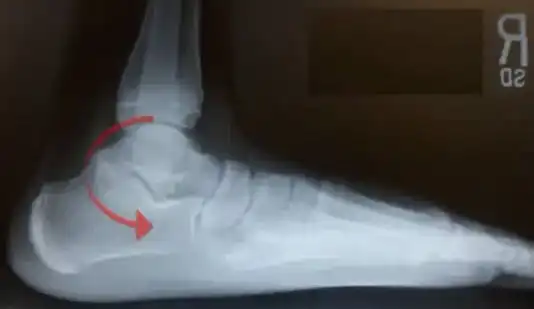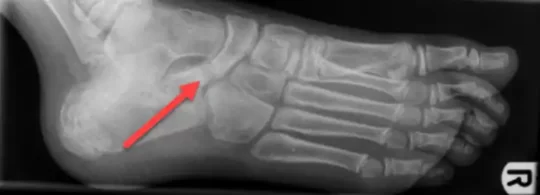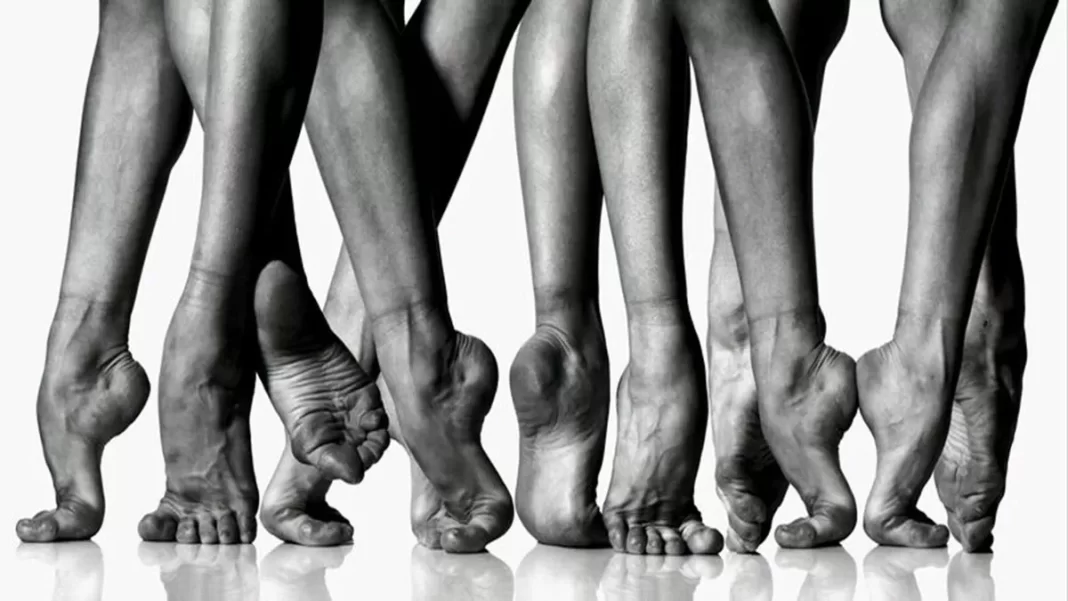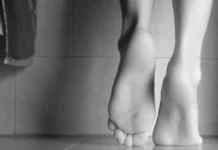Tarsal coalition is a congenital problem in which the tarsal bones – the bones in the middle of the foot and hindfoot – do not separate completely, leading to limited movement and pain.
Most people with a tarsal coalition don’t even know it. One study that examined people at autopsy found that 12% had some degree of tarsal coalition. The number of symptomatic people is less than 1% of the population. People with tarsal coalition usually have feet with normal alignment, although a number of them have very flat feet.
The tarsal coalition is most often a genetic malformation. It is passed from parent to child by a dominant gene. This means that if a person has a tarsal coalition, he or she has a 50% chance of giving this gene to his or her child, whether it is a boy or a girl. It is also interesting to note that the coalition is not always in the same location as the parents.
The tissue connecting the bones, often called a “bar”, can be composed of fibrous or bony tissue. The two most common types of tarsal coalitions (90% of all tarsal coalitions) are:
- Calcaneo-navicular (calcaneo-navicular bar)
- Talocalcanean (talocalcanean bar)
There are other possible combinations of bone coalition, but they are very rare.
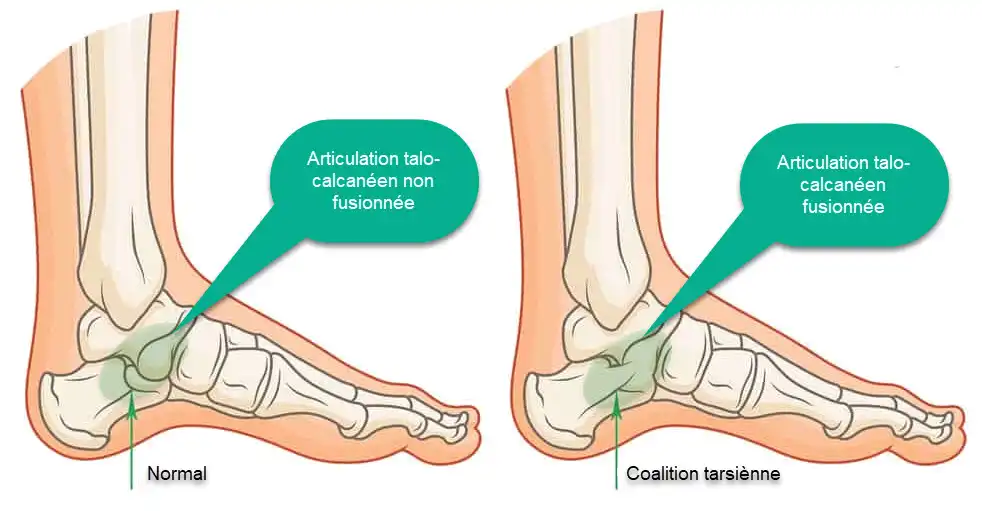
Symptoms
- Children’s bones are very malleable.
- Despite the presence of a coalition, the bones can deform enough to allow painless walking until the child’s skeleton has matured sufficiently.
- “Skeletal maturation” means that the bone is deposited in the tissue that forms the immature bone form gradually until adult bone is reached around the age of seventeen in the feet.
- The onset of symptoms associated with a tarsal coalition usually occurs around nine to seventeen years of age, with a peak incidence between ten and fourteen years of age.
- Symptoms may start suddenly one day and persist, and may include
- Pain (can be quite severe)
- Lack of endurance for the activity
- Fatigue, muscle spasms and cramps
- Inability to turn the foot or an analgesic gait.
Causes
- The tarsal coalition is almost exclusively the product of an error during the division of embryonic cells in utero.
- The birth defect responsible for the tarsal coalition is often thought to be an autosomal dominant genetic condition.
- This means that if you have a parent with this disorder, it is very likely that it will be passed to the offspring.
Radiography
